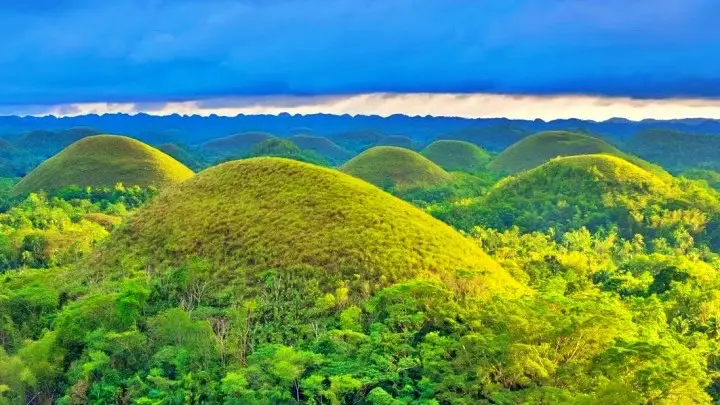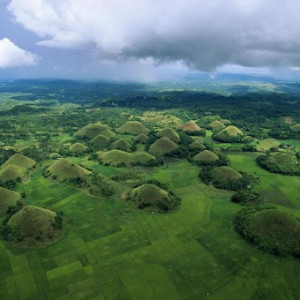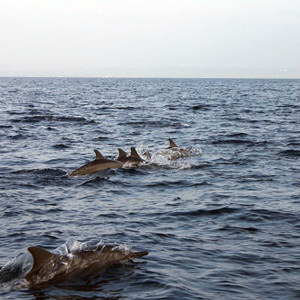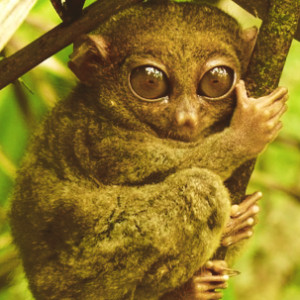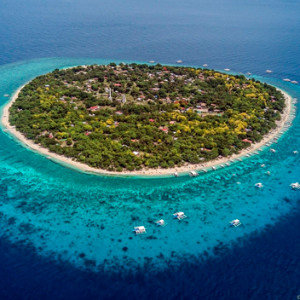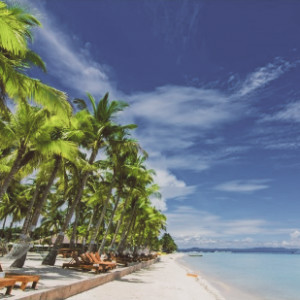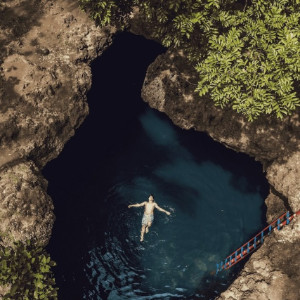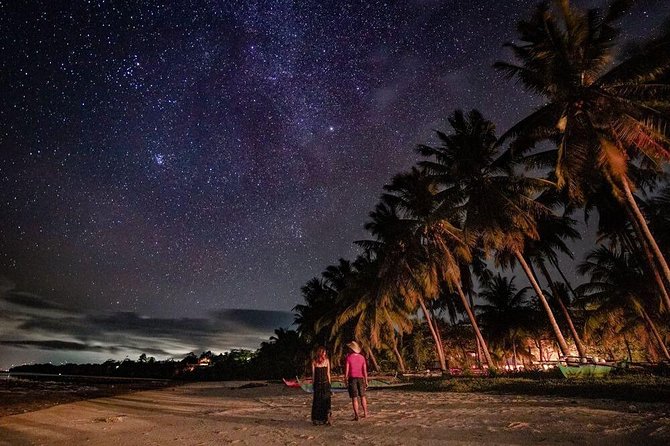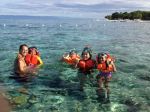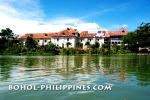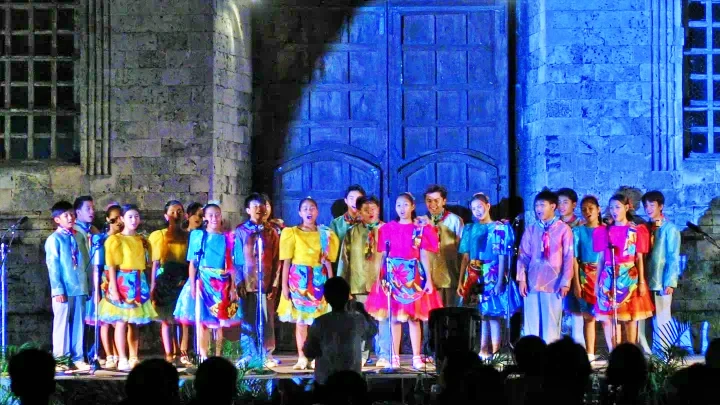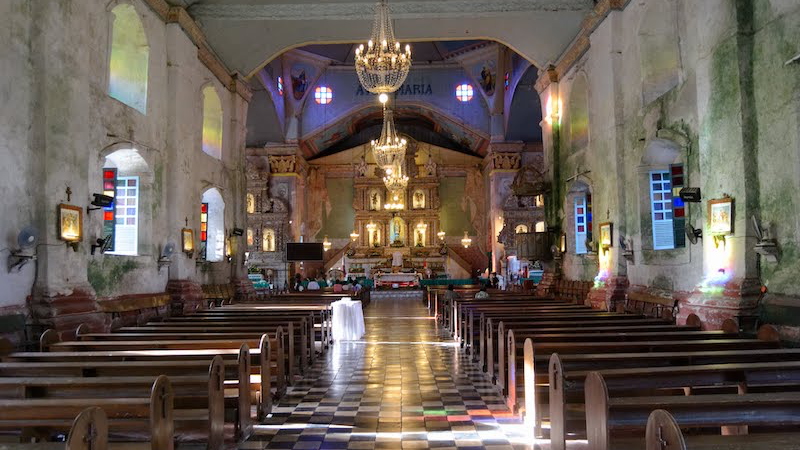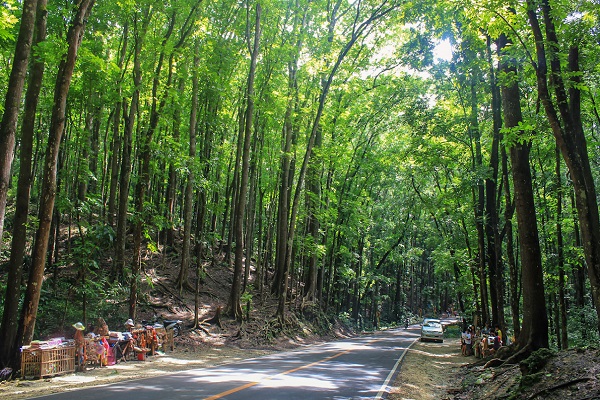Origin of the Town's Barangays
Secure your Cebu Bohol ferry tickets today to start your unforgettable journey!
Check out Now the best Bohol deals
Below is the list of Loon’s barangays with the description on how it got its name.
Agsoso was taken after particular species of freshwater shellfish, locally called as “sosó”; these are abundant in a spring that provides water to the municipal water system.
Badbad Occidental and Badbad Oriental, was taken from a shrub or tree called “badba-an”. This local shrub still abounds the area even at present.
Bagacay Kawayan, was named after the word “bagakay” which means ‘bamboo’. These are abundant in the area. The residents make use of these in making various handicrafts. “Kawayan” comes from the local term of “bamboo”.
Bagacay Katipuhan was also taken from “bagakay” and the word “katipuhan”. Katipuhan signifies a place where trees, known as “tipolo”, grow in abundance.
Bagacay Saong was named after “saong”, particular tree species which sap was believed to be the same as to what was used as paste in the construction of Noah’s Ark.
Bahi, the barangay named after “bahi” or the hard portion of the trunk of a “pugahan” palm which abounds the area.
Basac, called after “basak” or rice paddy which is no longer found in the village. These were replaced by patches of “palaw”, a water-loving plant species.
Basdacu is a combination of the words “balas” and “daku”. Balas means sand while daku means big. These two words are referring to the wide shoreline of the particular barangay.
Basdio, was also from the combination of the words “balas” and “diyo” or “diyot”. The word “diyo” means small. Unlike Basdacu, the place has a little patch of sand on its shoreline.
Biasong, was taken from the trees that grew near a little spring that flows to the Moalong Rives. The trees has the same name with the barangay.
Bongco, taken from “trabongko”, a legendary shining ball that giant snakes amused themselves with on dark evening.
Bugho, was presumed to be taken after “buho” or hole.
Cabacungan was called after the plant named “bakong” which was once abundant in the barangay.
Cabadug was said to be a place owned by “Badug”, considered the first inhabitant of the barangay.
Cabug, named after the nocturnal bats seen hanging from the branches of a big “tipolo” tree in the middle of the barangay, locally known as “kabug”.
Calayugan Norte and Calayugan Sur. These two barangays were named after the swaying of the coconut trees of the island village which, when viewed from the mainland, looked like they were in a fighting match or “ga-layug”.
Cambaquiz, was taken from the sand that crisscrosses from one side to the other depending on the wave’s direction. However, there is also a tale about the name’s origin. It was said to be taken from the phrase “come back and kiss (our ladies)”.
Campatud, originated from a spring known as “patud”, located in the middle of a thick forest.
Candaigan, after a legendary ever-burning stump of a dead tree where people kindle or “daig” their oil lamps.
Canhangdon Occidental and Canhangdon Oriental, was after a spring named “kanhangdon”. It was also said to be named after its location with regards to the Moalong River; thus, a place to be “halangdon” or to be looked up.
Canigaan, was taken after a legendary isolated place where big “nigad” trees abound, known as “Nigaran”.
Canmaag was named after the world’s smallest primate “mamag” or tarsius.
Canmanoc, was taken after “manok” that used to crisscross its lush hills and rest upon the branches of a large “tipolo” tree.
Cansuaguit, originated from a spring of the same name. The spring is where the villagers get much of their water for household use.
Cansubayon, was named after the Visayan word “subay/subayon” which means walking following the banks of creeks until reaching one’s destination. Or it was also taken from “subay-subay”, the term which refers to the act of catching freshwater fish starting from a spring to a bigger body of water.
Cantam-is Bago, was possibly taken from the combination of the words “tam-is” or sweet and “bago”, which refers to either a vegetable tree called “bago” or the native cassava cake called “binago”.
Cantam-is Baslay, was also taken after the combination of “tam-is” and “baslay”. “Tam-is” means sweet while “baslay” is a spring which is an important source of water for the community.
Cantaongon, was taken from “taongon” tree which abounds in the locality.
Cantumocad, was after the creek called which is located in a “canto”. The creek cuts the barangay at its center and is where one is obliged to “tukad” or take a leap.
Catagbacan Norte, Catagbacan Sur and Catagbacan Handig, was from the word “tagbak” meaning to barter or exchange goods produced by upland communities with those harvested from the sea. “Katagbacan” refers to a place where the barter takes place. The word “handig” was probably taken after the location of the place, that is, reclining on the slopes that rise from the plain.
Cogon Norte and Cogon Sur, was named after the grass, locally known as “kogon”.
Cuasi. The name was said to be taken from the word “Kawasi!”, which is an order to disembark or jump overboard to save their merchandise. It was from the legend where a banca was filled with merchants but was assaulted by strong winds and big waves. In order to save their merchandise, the men shouted “Kawasi!”.
Genomoan. Was said to have originated from a legend where a carabao was left to wallow or “homol” in the river by its owner. The owner had a stomachache which forces him to leave for home. It was raining hard and it caused the river to swell. The farmer’s condition got serious and in his delirium, the farmer kept murmuring about his “hinomolan” or the carabao he had left to wallow in the river.
Lintuan. The name was taken after the word “balintong-balintong” or “tuwang-tuwang”. The word refers to the changing movement of sand near Lawis Point caused by the blowing of the south and north winds.
Looc, was taken from the curved shape of its coastline, that is “na lo-ok”.
Mocpoc Norte and Mocpoc Sur, was from the warning sound “pok-pok” which is produced by knocking a drum every time the Moros would emerge on the sea to attack the barangay and plunder its homes.
Moto Norte and Moto Sur, was from the word “moto” or hill.
Nagtuang, was originally taken after “nagatuwang”. It was a phenomenon in the place where the flow of water from a spring is absorbed in a much higher elevation.
Napo, was said to be taken after “napolo” or “napo-o” which means island-like. It is a description of its location that seems to be separated from the mainland. The word “Napo” also means “dapit nga balason” or a sandy place.
Nueva Vida, was taken after the Spanish phrase “new life”. The residents discovered this as a new settlement when the population of the barangay Catagbacan located below it increased.
Pananquilon. A medical herb called “panankilon” that abounds in the locality was believed to be where the barangay got its name.
Pantudlan, after “tulod-tulod”, the thrusting action of the waves resulting in the transfer of the sand to the southern side of Baluarte Point when the north wind blows and to the northern side when the south wind blows.
Pig-ot, was named after “pi-ot” which refers to the narrow stretch of the provincial road that had been widened by blasting the cliffs and boulders.
Pondol, after “pundok-pundok”, “pundo-pundo” or “pondol”, a description of the place which has several “lawis” or points jutting out into the sea.
Quinobcoban. There were several holes dug by the early residents of the village and was referred to as “kinubkoban” was said to be the origin of the barangay’s name.
Sondol, after “donsol”, a sea slug species abundant in its seashore.
Song-on, was said to be taken from the arch-like rock formation along the shoreline that looks like a cave viewed from the sea. In order to pass through, one has to stoop or “so-ong”.
Talisay. Talisay trees grow on cliffs hanging over its shoreline. It was where the barangay got its name.
Tan-awan. The word that means a place where one gets a good view of the villages below it as the place is located on the highest peaks of Loon.
Tangnan, was after a cave-like hole called “tangnan” that contains fresh water.
Taytay, was taken from the word “taytayan” which means bridge.
Ticugan, the barangay named after the “tikog” plant whose leaf strips can be woven into mats.
Tiwi, after the “tiwi” trees that once grew on the eastern part of the village.
Tontonan, was from the word “tonton” which means a rope used by early residents to scale a high mountain in the village.
Tubodacu and Tubodio, was after from “tubod” (spring), “daku” (big) and “diyot” or “diyo” (small), descriptions of the villagers’ sources of water.
Tubuan, taken after “tubod” or “tuburan”, a local spring.
Ubayon, after “nag-ubay sa baybayon” or straddling the shoreline, a description of its location.
Ubojan, after “ulbohan”, a place where there used to be a spring or natural well from where abundant water gushed in spurts or “ga ulbo-ulbo”.
Recommended Bohol Philippines Tours
[ Bohol Sight Seeing Day Trips - Check Out Availability ]
[ Full Day Cruise and Sailing Tours - Check out Availability ]
[ Full Day Adventure Tours - Check out Availability ]
Discover more of Bohol's natural wonders through our recommended tours. Click on the links below to embark on unforgettable adventures:
Ready to explore the beautiful islands of Cebu and Bohol? Secure your ferry tickets today through 12go and start your unforgettable journey!
Your Stories and Comments Here!
Go ahead and tell us your story!
What Visitors have said!
Click below to see contributions from other visitors ...
How Pangangan Island Got Its Name? Not rated yet
HOW DID PANGANGAN ISLAND GOT IT’S NAME?
The island of Pangangan is a part, and one of the two islands of the town of Calape,Bohol.
Pangangan was …
Check out for Bohol Hotel Deals
Back to Top: Origin of the Barangays' Names
Back to Bohol
Ready to explore the beautiful islands of Cebu and Bohol? Secure your ferry tickets today through 12go and start your unforgettable journey!
recommended hotel booking
Book your stay in Bohol's breathtaking surroundings through Agoda and experience the ultimate relaxation
Top 25 Sights and Attractions in Bohol
- Chocolate Hills
- Tarsier Conservation Sanctuary
- Panglao Island
- Loboc River Cruise
- Hinagdanan Cave
- Balicasag Island
- Alona Beach
- Bilar Man-made Forest
- Blood Compact Shrine
- Baclayon Church
- Bohol Bee Farm
- Anda Beach
- Sipatan Twin Hanging Bridge Loboc
- Danao Adventure Park
- Sagbayan Peak
- Butterfly Conservation Center
- Clarin Ancestral House
- Dimiao Twin Falls
- Mag-Aso Falls
- Anda White Beach
- Lamanok Island
- Rajah Sikatuna Protected Landscape
- Dauis Church
- Can-umantad Falls
- Punta Cruz Watchtower
Top 20 Destinations of Bohol
- Tagbilaran City
- Panglao Town
- Talibon Town
- Anda Town
- Loboc Town
- Dauis Town
- Ubay Town
- Tubigon Town
- Loon Town
- Jagna Town
- Alicia Town
- Carmen Town
- Getafe
- Danao Town
- Bilar
- Alburquerque
- Sierra Bullones
- Sagbayan Town
- Baclayon Town
- Antequera
Ready to explore the beautiful islands of Cebu and Bohol? Secure your ferry tickets today through 12go and start your unforgettable journey!
All Rights Reserved ©2023. Bohol Philippines Travel Guide
Address: Talibon, Bohol, Philippines
